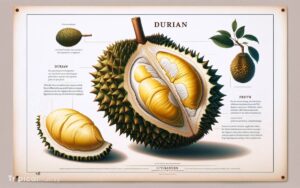How to Make Durian Paste? 5 Easy Steps!
Creating durian paste from ripe durian fruit involves selecting the best quality fruit, peeling, pitting, cooking, blending into a paste, and proper storage.
This flavorful paste can be used in a variety of Asian dishes, enhancing their taste with its rich and unique flavor.
Durian paste is made by:
For example, durian paste can be a key ingredient in traditional Southeast Asian desserts like durian pancakes or mooncakes.
Explore the exotic taste of Southeast Asia by making your own durian paste, a perfect addition to a variety of desserts and savory dishes.
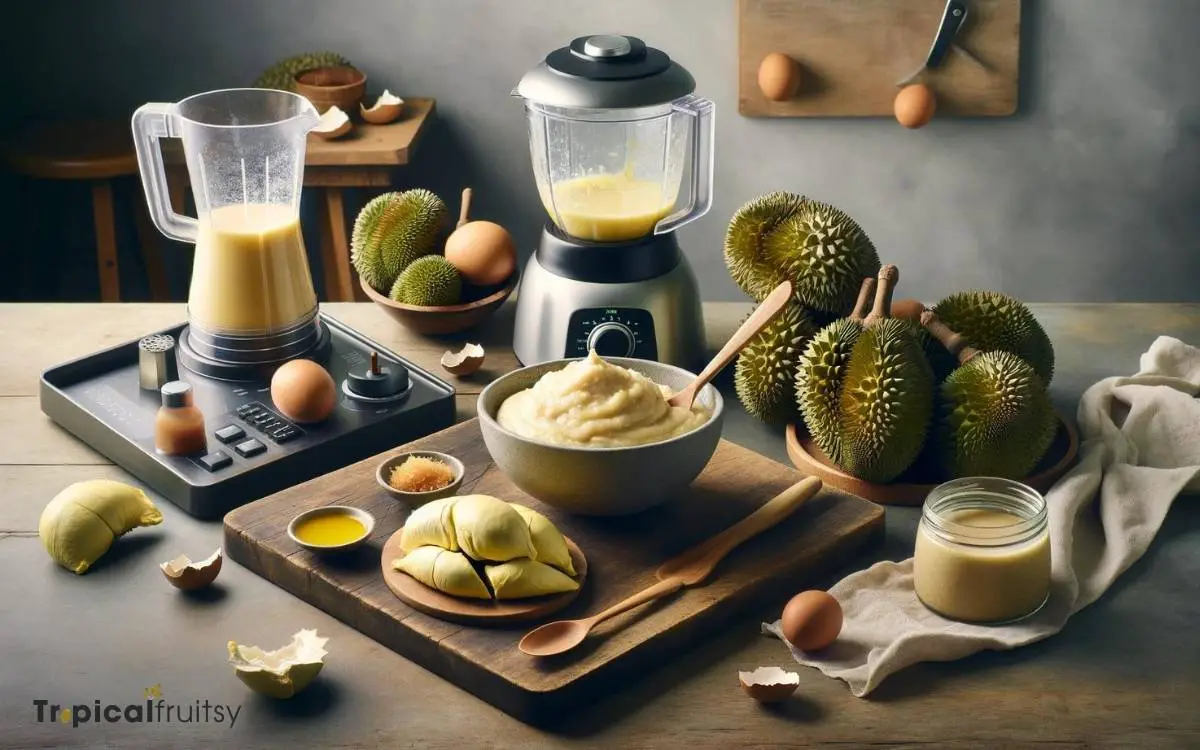
Key Takeaway
Step 1: Selecting the Right Durian

Choosing a ripe, high-quality durian is crucial for creating a flavorful durian paste. A connoisseur’s approach to selecting this pungent fruit involves assessing its exterior for firmness and the presence of a slight give.
The stem should appear large and solid, indicating a healthy attachment to the tree, which often translates to freshness.
A ripe durian emits a distinct, strong aroma – an intrinsic characteristic that signals readiness for consumption.
Additionally, listening for the subtle sound of seeds moving within when the fruit is shaken gently can suggest the ideal ripeness.
Experts also advise examining the shape; a symmetrical durian, free from unusual bulges, often houses evenly ripened pods, ensuring a consistent texture and taste in the paste produced.
Step 2: Preparing the Durian
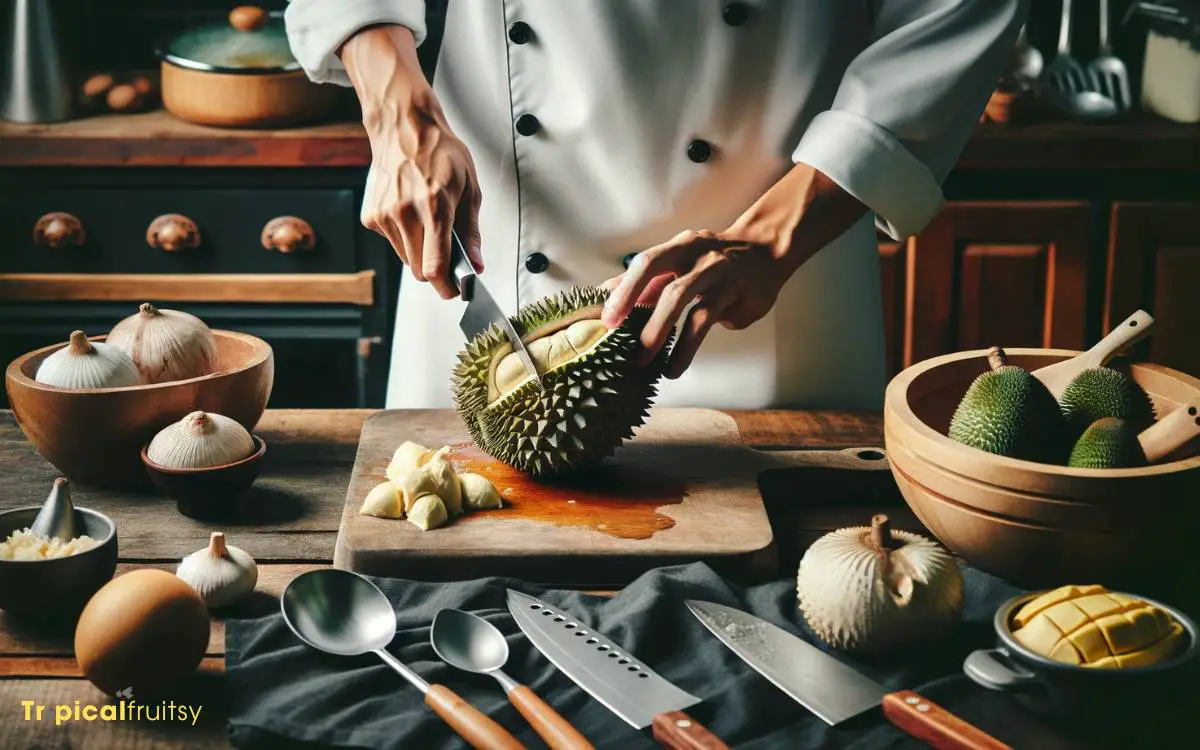
Upon securing a ripe durian, the initial step in preparation involves carefully opening the fruit to extract its flesh.
The durian’s hard, spiky exterior may seem daunting, but with the proper technique, the creamy interior is readily accessible.
Here are the essential steps to prepare the durian:
- Wear Gloves: Protect your hands from the sharp spikes by wearing thick gloves. This precaution also helps in avoiding the strong smell lingering on your skin.
- Locate the Seams: Identify the natural seams of the durian running along the fruit. These lines are the weakest points where you should begin to open the shell.
- Pry Open and Extract: Use a sturdy knife to gently pry open the durian along the seams. Once opened, carefully remove the large chunks of edible flesh, avoiding the large inedible seeds.
Step 3: Cooking the Fruit
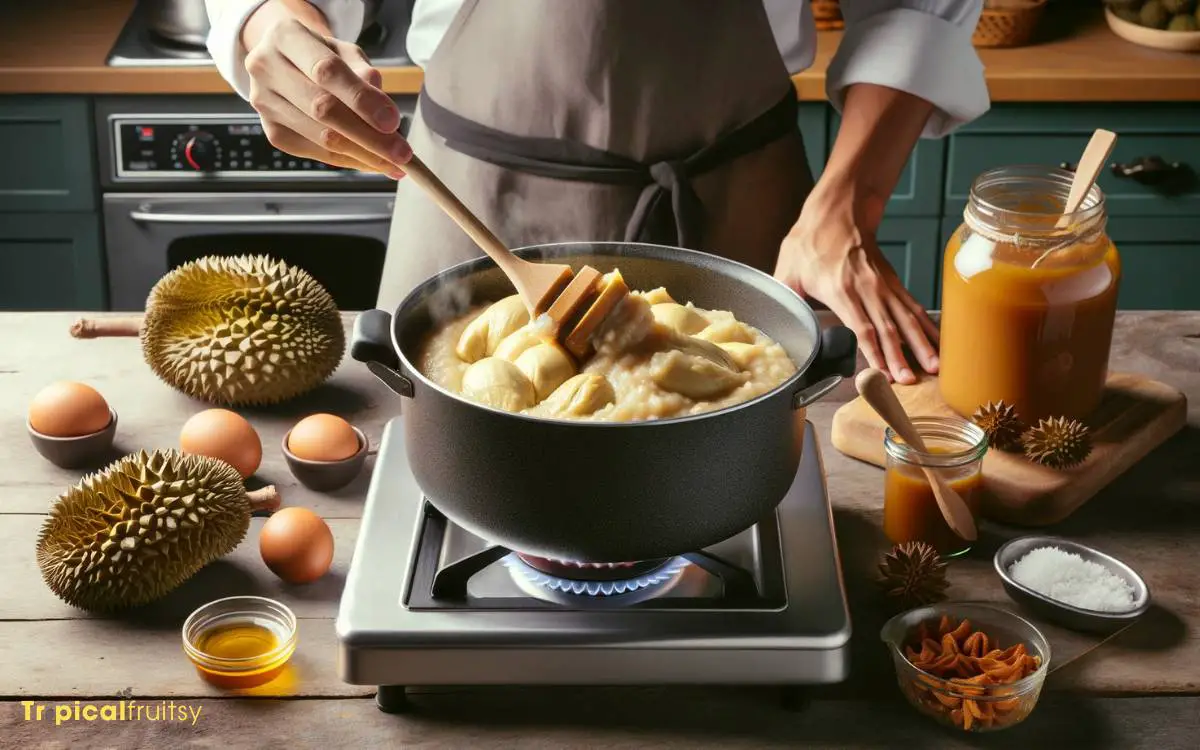
After preparing your durian by removing the flesh, proceed to cook it gently to create a smooth durian paste.
It’s essential to cook the fruit over low heat to avoid burning and to ensure that the flavors are properly concentrated. Stir the flesh regularly to help break it down and to prevent it from sticking to the pan.
Here’s a simple guide to cooking durian for paste:
| Step | Description |
|---|---|
| 1 | Place durian flesh in a heavy-bottomed pan. |
| 2 | Cook over low heat, stirring constantly. |
| 3 | Continue cooking until the fruit becomes a thick, homogeneous paste. |
Cooking time may vary depending on the fruit’s ripeness and water content. The end result should be a deep golden paste that’s rich in flavor, ready for further use in your culinary creations.
Step 4: Blending Into Paste
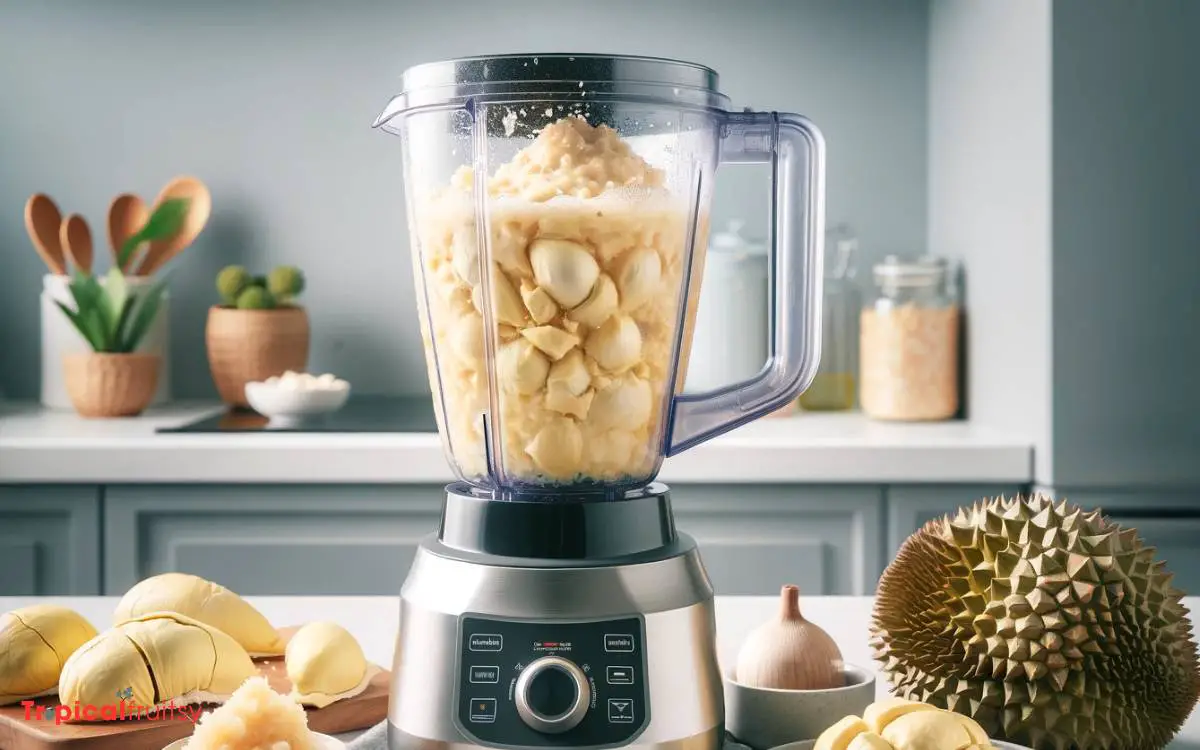
Once the durian has been gently cooked to the appropriate consistency, it can be transferred to a blender or food processor to achieve a fine, smooth paste.
This step is crucial for creating a uniform texture that is quintessential for various culinary applications, whether it be in confectioneries, pastries, or as a spread.
The blending process should be undertaken with care to ensure that no fibrous pieces remain, as this could affect the final product’s quality.
Here are the steps to ensure a seamless blending process:
- Ensure the durian flesh is at a manageable temperature to prevent any damage to the blender’s plastic components.
- Pulse the fruit in intervals, scraping down the sides regularly to promote even blending.
- Continue to blend until the paste reaches a velvety consistency, devoid of any lumps or fibers.
Step 5: Storing the Paste
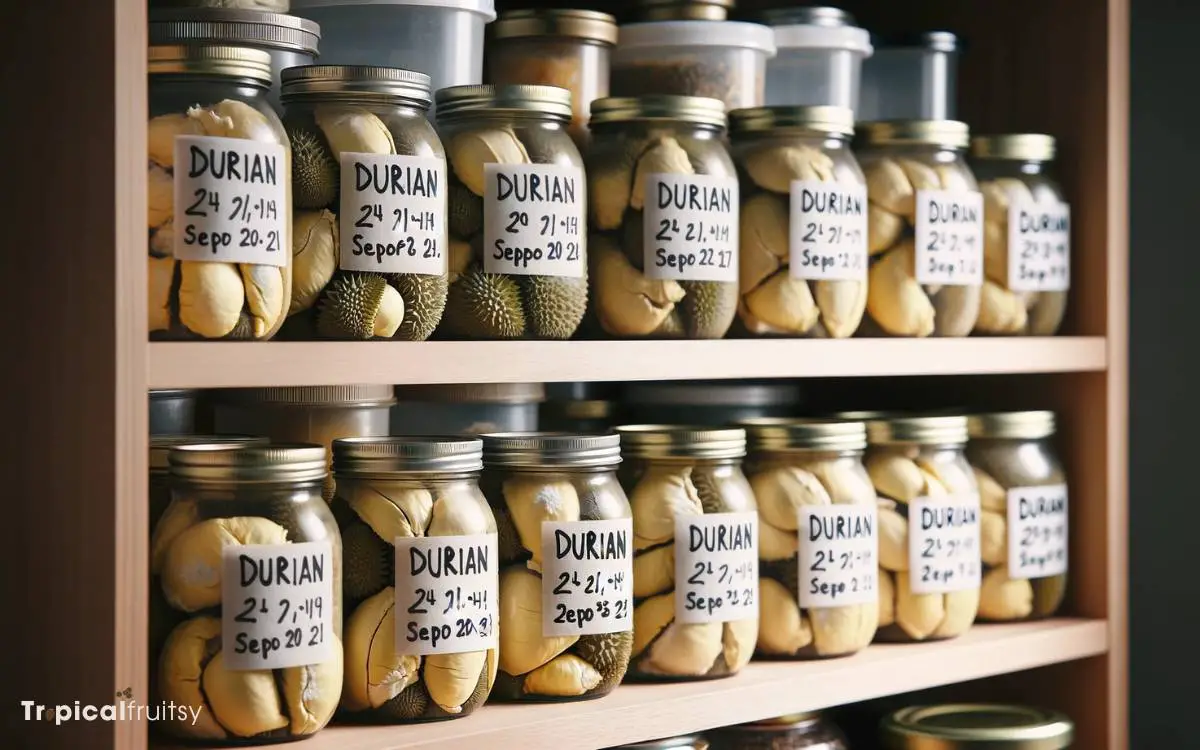
Proper storage of the durian paste is essential to maintain its freshness and flavor for future use. Once your durian paste is prepared, it should be transferred to an airtight container to prevent exposure to air, which can degrade its quality and intensity.
Refrigerate the paste if it will be used within a few days; this will slow down the fermentation process and preserve its original taste and aroma.
For longer preservation, freezing the paste is advisable. Portion the paste into usable amounts before freezing to avoid thawing and refreezing.
Use freezer-safe containers or vacuum-sealed bags to prevent freezer burn. Label each container with the date of storage to ensure usage within an optimum period, typically three to six months for best quality.
Conclusion
Harnessing the quintessence of the ‘king of fruits’ into a delectable durian paste is akin to capturing culinary lightning in a jar.
This versatile concoction serves as a testament to the alchemy of traditional gastronomy, offering a sensory overload with its rich, creamy texture and potent aroma.
Properly executed, this paste can elevate myriad dishes, enchanting the palates of gourmands and adding a luxurious dimension to the tapestry of global cuisine.






